As temperatures trend hotter across the country, it’s a good time to think about how heat in general affects tire performance. Specifically, how heat and tire pressure are related. The relationship between the two might not be quite as straightforward as you might think. For example, what does it mean when you have one hot tire? We’ll cover the basics — like what happens to your tires when the outside temperature increases — as well as the importance of keeping close tabs on your tires’ pressure, temperature, and performance.
Tire pressure and tire longevity
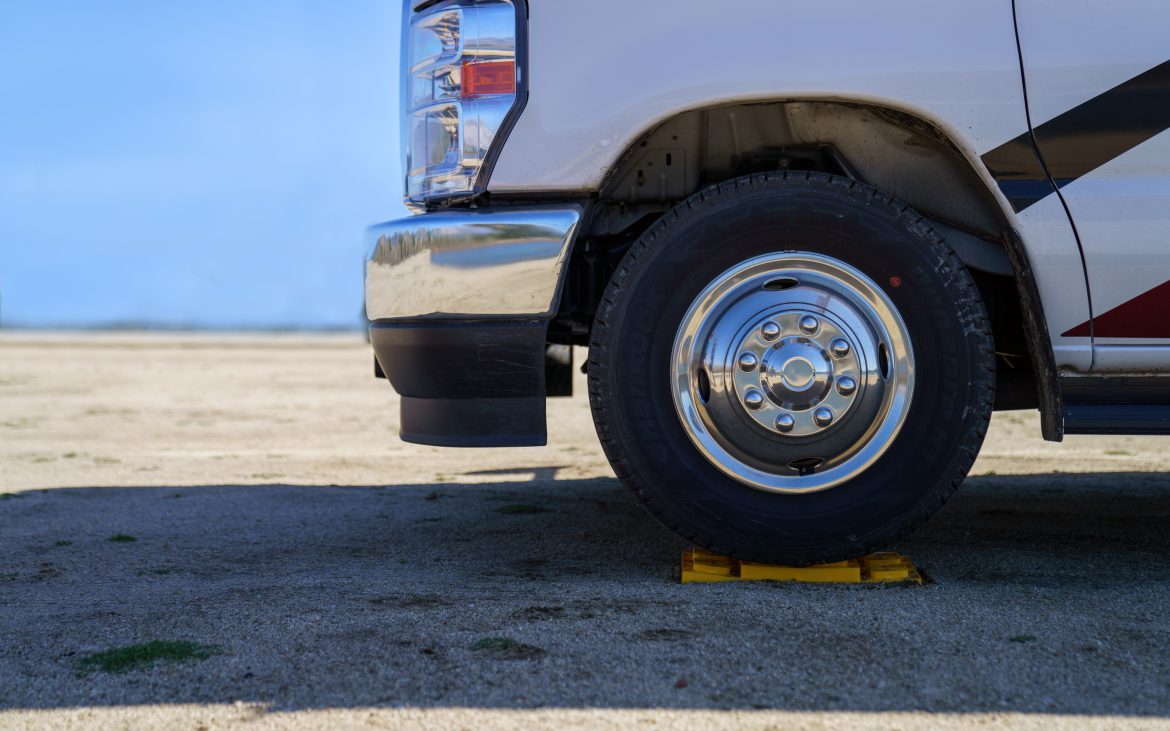
As most of us know, an underinflated tire exposes more surface area of the tire to the pavement. And the friction this causes can quickly increase the temperature of the tire, compromising its integrity. A slightly underinflated tire will deteriorate far more quickly than a properly inflated tire. But the problem doesn’t stop there.
An overinflated tire also presents longevity issues. When a tire is overinflated, less surface area comes into contact with the pavement, which contributes to uneven wear as the force and weight of your vehicle fall on a smaller surface area.
This is why it’s crucial to maintain tire pressure in the Goldilocks zone — not overinflated, not underinflated. This is an easy enough task when you regularly check the tire pressure, and it’s a great practice to make your tires last longer. But what happens when your tires are exposed to extreme temperature fluctuations as you travel? Both overinflation and underinflation put your tires at risk, and it becomes increasingly difficult to moderate the changes during hot summer months.
What should tire pressure be in hot weather?
As a general rule, your tire pressure increases as the outside temperature increases. Gas expands when heated, and your tires will be under higher pressure the hotter it gets. How much? For tires, a change of 10 degrees in temperature will affect the PSI by 1-2 degrees. The hotter the temperature, the higher the PSI. So, on colder mornings when you check the tire pressure, think about how the temperature increase throughout the day will change the PSI.
With some parts of the country regularly hitting 105-110 degrees Fahrenheit, your tires could face significant pressurization changes. As the heat increases — and as you drive over hot surfaces and create additional heat through friction — your tires are at risk of becoming overinflated. Add in a bumpy road or a road hazard, and you face a serious risk of a blowout.
Why one hot tire?
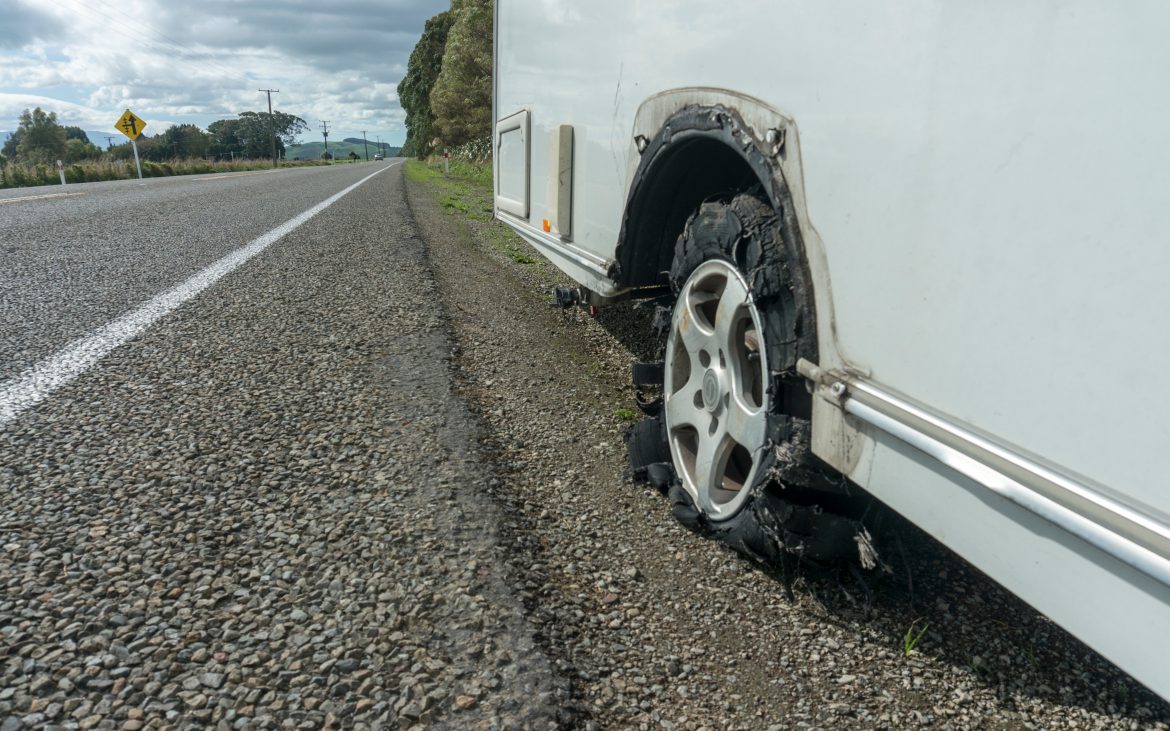
Tire problems manifest themselves in many different ways, but what happens when the problem you’re having is out of the ordinary? For example, a gentleman told me recently his coach had blown the right inside dual three different times, and it only had 20,000 miles on it. The chassis builder replaced the first tire, but after that, they wouldn’t replace it again. They had apparently checked it out several times, but couldn’t find anything wrong with it.
Since he said the tire/wheel assembly is hotter than the same one on the other side, I suggested he record those temperatures and document them. What I think is happening with this particular situation is that the hose from the inside wheel that allows filling from the outside wheel is leaking, draining the air out of the inside dual. When it gets low on air, it develops a tremendous amount of heat and friction that eventually blows the tire. (If you have a set of these hoses on your coach, check them to make sure they are not leaking, and check the tire pressure on your inner tires frequently.)
Solutions for a single hot tire
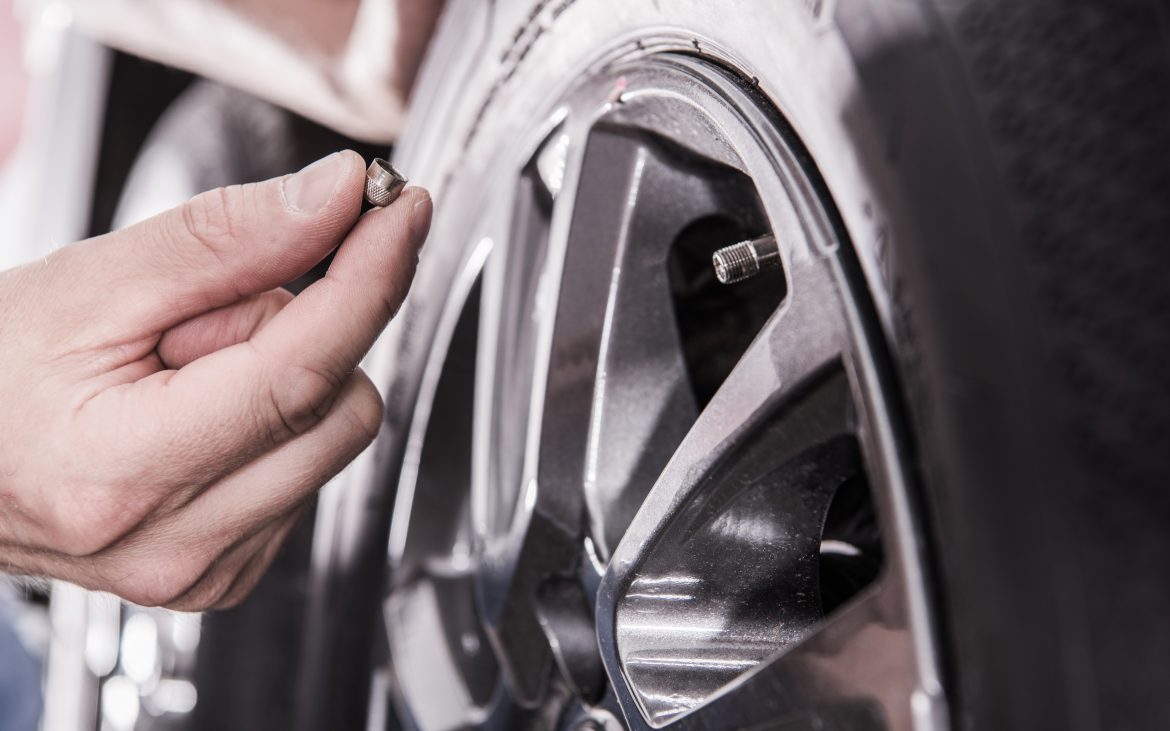
One of the things we recommend is a full steel stem (not flexible). It comes out of the inner dual that curves toward the outside. When it comes to rotate your tires, you may have to dismount it at the tire and wheel because the stem is meant to stay on that inside dual position. I think you may be able to rotate it to the front wheel as well.
There’s another product called the Crossfire Dual, which attaches both the tires and wheels together to a common filling point, and equalizes the pressure between the two tires. Typically the inner runs hotter, which builds pressure up. This is due to the fact that the inner tires are closer to the brake drums and don’t have the same air circulation as the outers do.
The Crossfire uses a color-coded gauge that makes it easy to see if the pressure has gone too high or too low. If there is a blowout or if pressure drops more than 10 psi between the two tires, it shuts off the airflow between the two wheels so both won’t go flat. They do weigh quite a bit, though, so I would recommend re-balancing the wheels to compensate for the weight offset even though the product mounts near the center point of the hub.
Heat is a sign of resistance. An underinflated tire is one cause, but so is a dragging brake drum, a bad bearing, etc. For this reason, I think an infrared heat gun is another invaluable tool for diagnosing a hot tire or tire/wheel assembly.
Tire pressure monitoring system
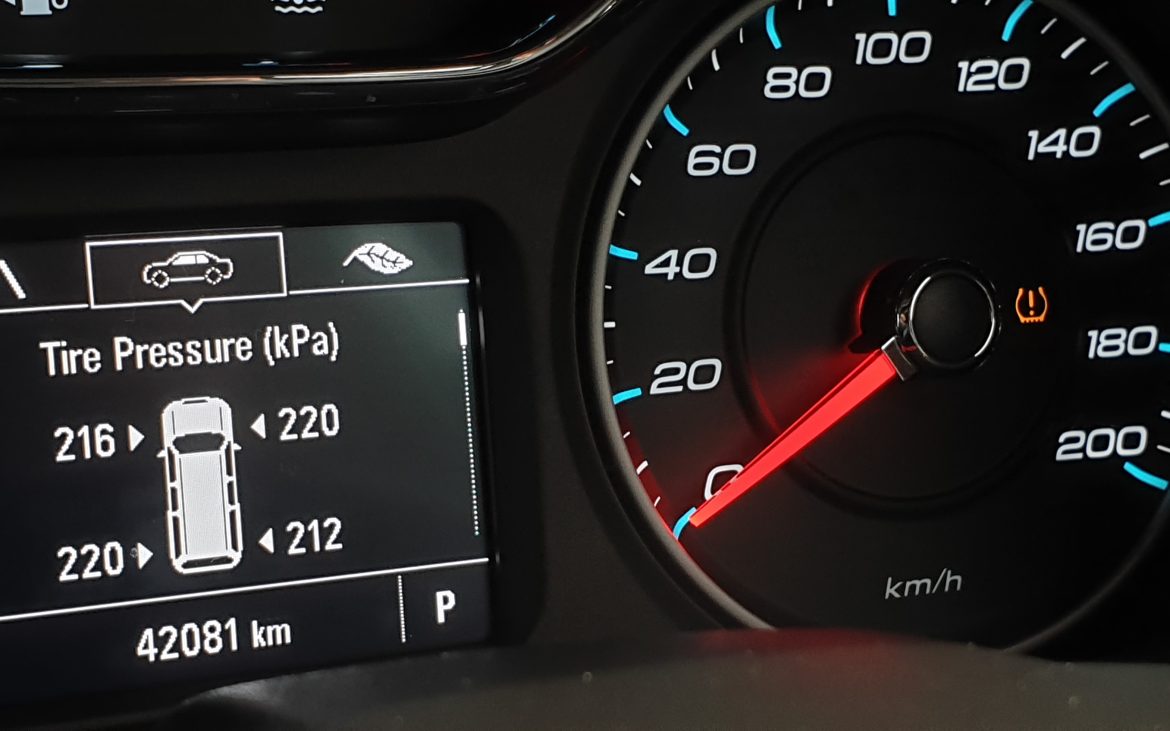
Whether you’re facing heat fluctuations due to a mechanical failure — like a tire leaking air pressure and causing more friction — or because the temperature outside is heating up, you need to be able to detect changes as they occur. And, for tires, there’s nothing better than investing in a reliable tire pressure monitoring system that includes a temperature reader as well. This way, you can make inferences based on tire pressure and heat and make needed adjustments before you run into a flat.
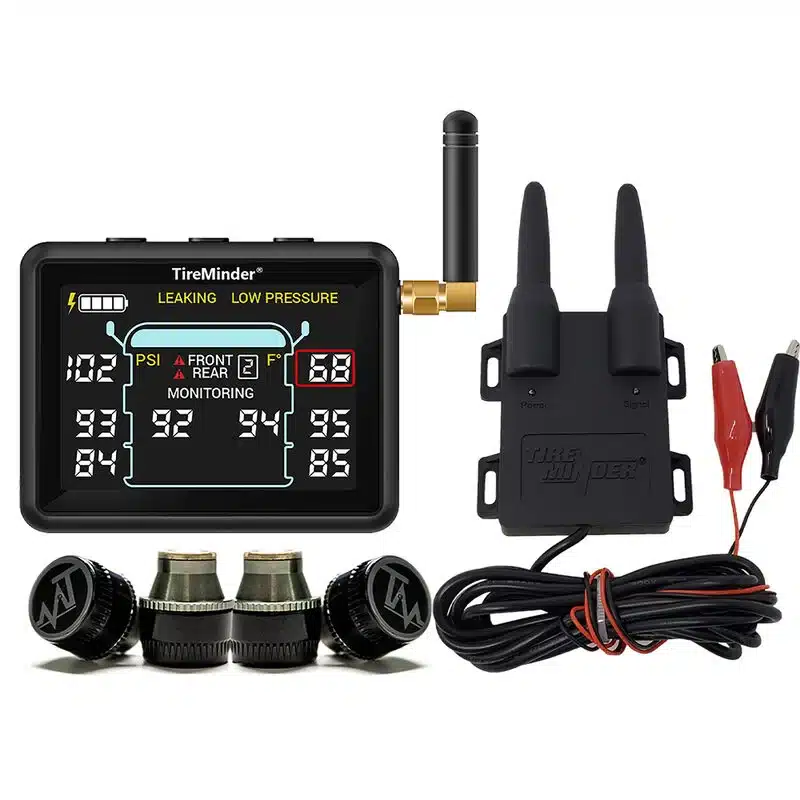
Stay proactive about your tire’s conditions and the conditions you expose your tires to. That includes equipping yourself with the right precautions for the event of flat or damaged wheels and tires. For this, trust Good Sam Tire & Wheel Protection to quickly get you back on the road without a bill.
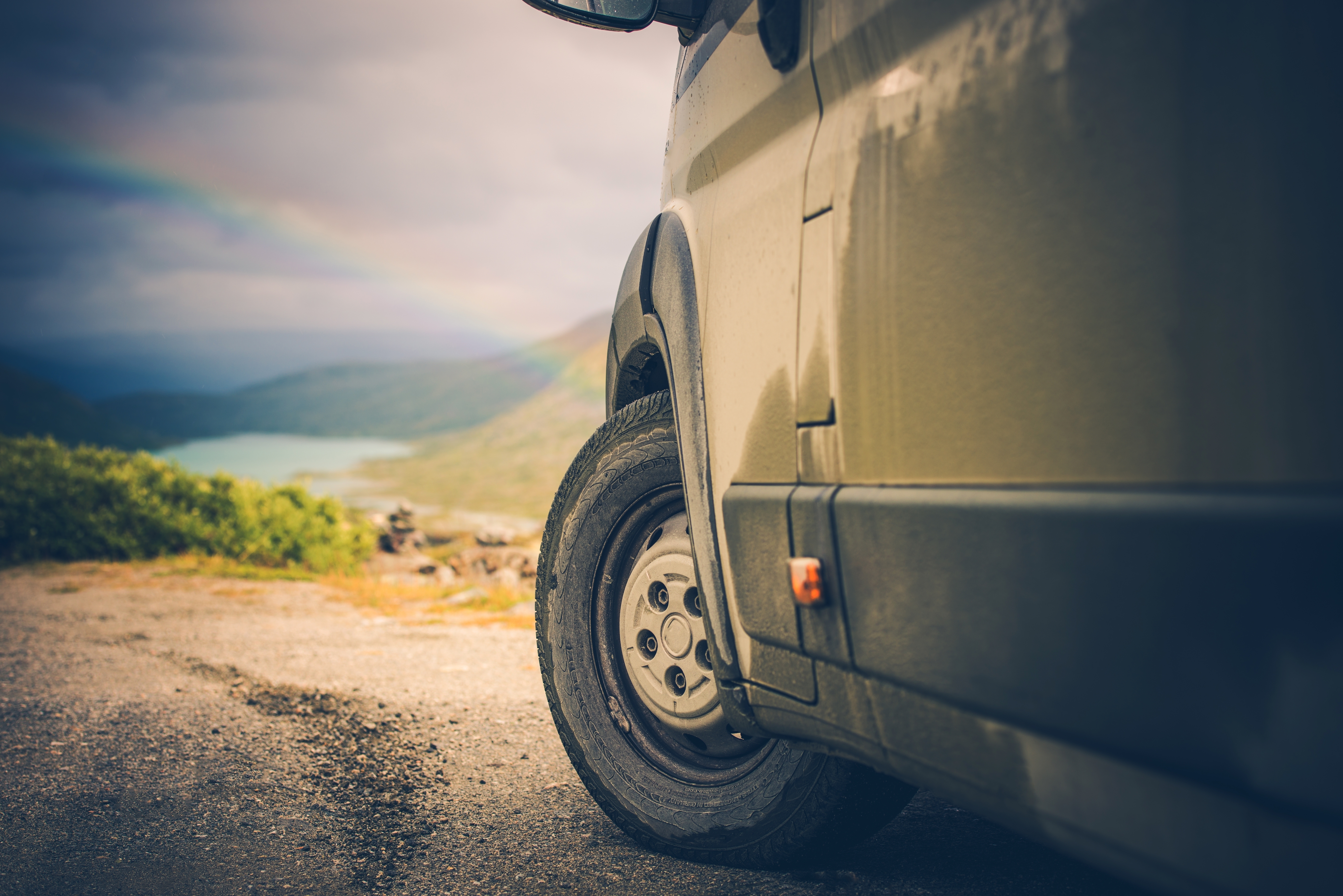



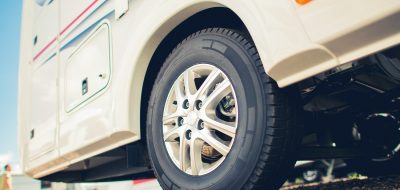

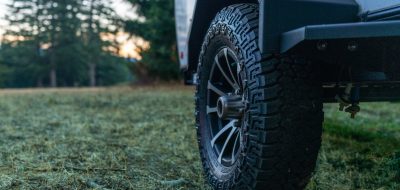
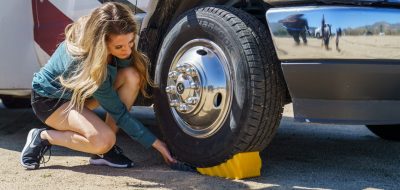
Peter Mercer
There are other scenarios that can cause a single tire or more to be considerably higher in temperature. Wheel misalignment can produce substantial tire heat when compared to those in the correct alignment. In addition, tires on the sunny side will generally be noticeability higher in temperature when measured with an infra red thermometer. Internal heat sensors will also detect and reflect this. Always check and, if needed, top-up tires first thing in the morning, cold.
Pingback: my url
Robert A. Henderson
Thank you Roger! My wife and I came up on a motorhome towing a mini van that had completely worn his left rear tire off his rim after it went flat. He was not even aware of it! We also had another customer who had a flat on his tow vehicle and it caught on fire and then caight his motorhome on fire and destroyed it! Thank you again! Robert
Roger-Ohio
Robert you are right on the money with your comments and diagnosis. Modern tires simply just do not fail for no reason. Especially multiple tires on the same position. 99+% of the time a tire failure can be traced to either air loss of some form of impact. This is based on forensic examination ( think CSI) of thousands of tire failures.
One comment about tire failures on a dual position. Few people think about the damage being done to the tire that did not loose air. When one tire looses air the other has to carry the load which can result is 100% over load. This uses up much of that tire’s “life”.
Unless you know when the air loss started and at what speed you were driving and stop very soon (few miles) you definately have done internal structural damage to the “good” tire.
Filling the problem tire and using a good digital gauge to chart the inflation every few hours is a good step if you don’t have a TPMS.
One of the first purchases for my Freelander 2130QB Class-C was the Hella TPMS system from tire rack.
http://www.tirerack.com/accessories/detail.jsp?ID=51
plus 2 extra valves for the 6 tires. Note my recommended inflation is 65 ( I run 68) cold. this system is car based so 75PSI is it’s upper range but it works for me. I can get pressure and internal temperature any time. The pressure is accurate to +/- 2 psi in the 65 to 70 psi range. Temperature seems to be accurate to +/- 3 °F based on comparing the reading from all 6 in the AM before tires get in the sun.
I STRONGLY urge all RV owners to get a TPMS system that will work on your vehicle and pressure range. The system can pay for itself in time and $ saved if you avoid just 1 tire failure.